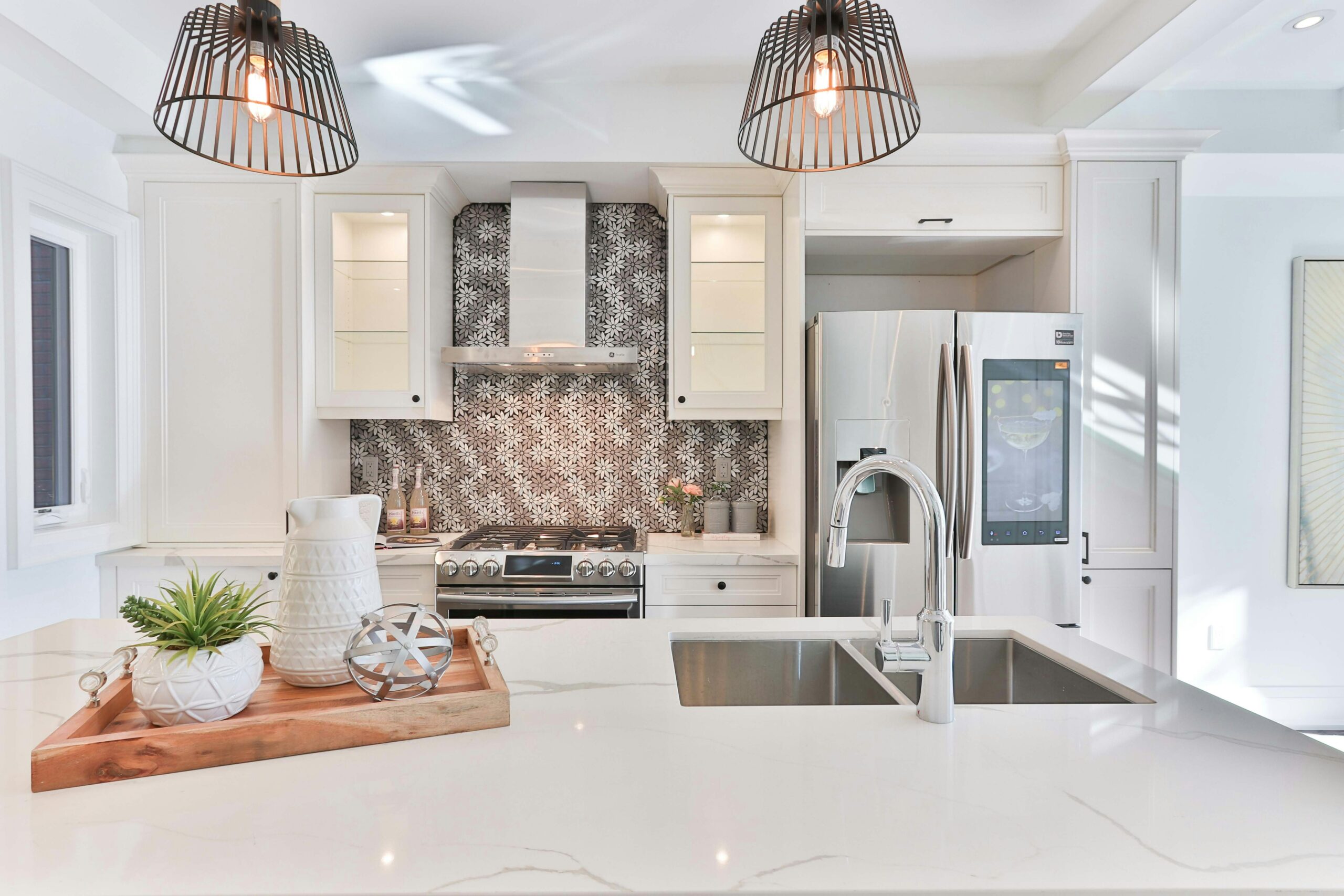Should you opt for a granite or marble countertop for your kitchen? This is a question that homeowners often grapple with during kitchen renovations. Both granite and marble are incredibly popular choices for countertops due to their distinct qualities and aesthetic appeal. Yet, they are indeed different in many aspects, and understanding these differences is pivotal in making an informed decision.
Throughout the rest of this comprehensive guide, we will delve into numerous factors one needs to consider when choosing between granite and marble. This includes understanding the basic differences, conducting a comparative analysis, evaluating durability, aesthetics, maintenance and cleaning procedures, cost analysis, and even reviewing the installation process. Stay tuned as we break down the pros and cons of both types of countertops to help you make the best purchase decision to suit your needs.

Understanding the Difference Between Granite and Marble Countertops
When it comes to choosing the perfect countertop for your kitchen or bathroom, granite and marble are two popular options that often come to mind. While both materials offer their own unique benefits and aesthetic appeal, it’s important to understand the key differences between them in order to make an informed decision.
Composition and Formation: Granite and Marble Countertop
Granite is an igneous rock that is formed from the cooling and solidification of lava or magma. It is composed mainly of quartz, feldspar, and mica, and is known for its durability and strength.
Marble, on the other hand, is a metamorphic rock that is formed from the recrystallization of limestone under extreme heat and pressure. It is primarily composed of calcite and has a softer, more luxurious appearance.
Durability
Granite countertops are highly durable and resistant to scratches, heat, and stains. They are known for their longevity and can withstand heavy daily use without showing signs of wear and tear.
Marble countertops, while elegant and visually appealing, are more prone to scratches and stains. They are also sensitive to acidic substances, such as citrus juices and vinegar, which can cause etching and discoloration.
Aesthetics
Granite countertops are available in a wide range of colors and patterns, offering a natural and earthy look. The unique veining and specks of minerals add depth and character to the surface.
Marble countertops, on the other hand, are known for their timeless beauty and classic elegance. The smooth and polished surface, combined with the natural veining, creates a luxurious and sophisticated look.
Maintenance and Cleaning: Granite and Marble Countertop
Granite countertops are relatively low maintenance and can be easily cleaned with mild soap and water. They should be sealed periodically to protect against stains and bacteria.
Marble countertops require more maintenance and should be cleaned with a pH-neutral cleaner. They also need to be sealed regularly to prevent staining and etching.
Evaluating the Cost
Granite countertops are generally more affordable than marble countertops. The cost of granite varies depending on factors such as color, pattern, and thickness.
Marble countertops are considered a luxury option and are typically more expensive than granite. The price of marble can vary greatly depending on the quality and rarity of the stone.
Pros and Cons of Choosing a Marble Countertop
-
- Pros: Luxurious appearance, timeless beauty, unique veining patterns
-
- Cons: Prone to scratches and stains, sensitive to acidic substances, requires regular maintenance
Pros and Cons of Choosing a Granite Countertop
-
- Pros: Durability, heat and scratch resistance, wide range of colors and patterns
-
- Cons: Can be more expensive than other options, requires periodic sealing
Installation Process for Granite and Marble Countertops
The installation process for both granite and marble countertops involves measuring, cutting, and polishing the stone to fit the desired space. Professional installation is recommended to ensure a proper and secure fit.
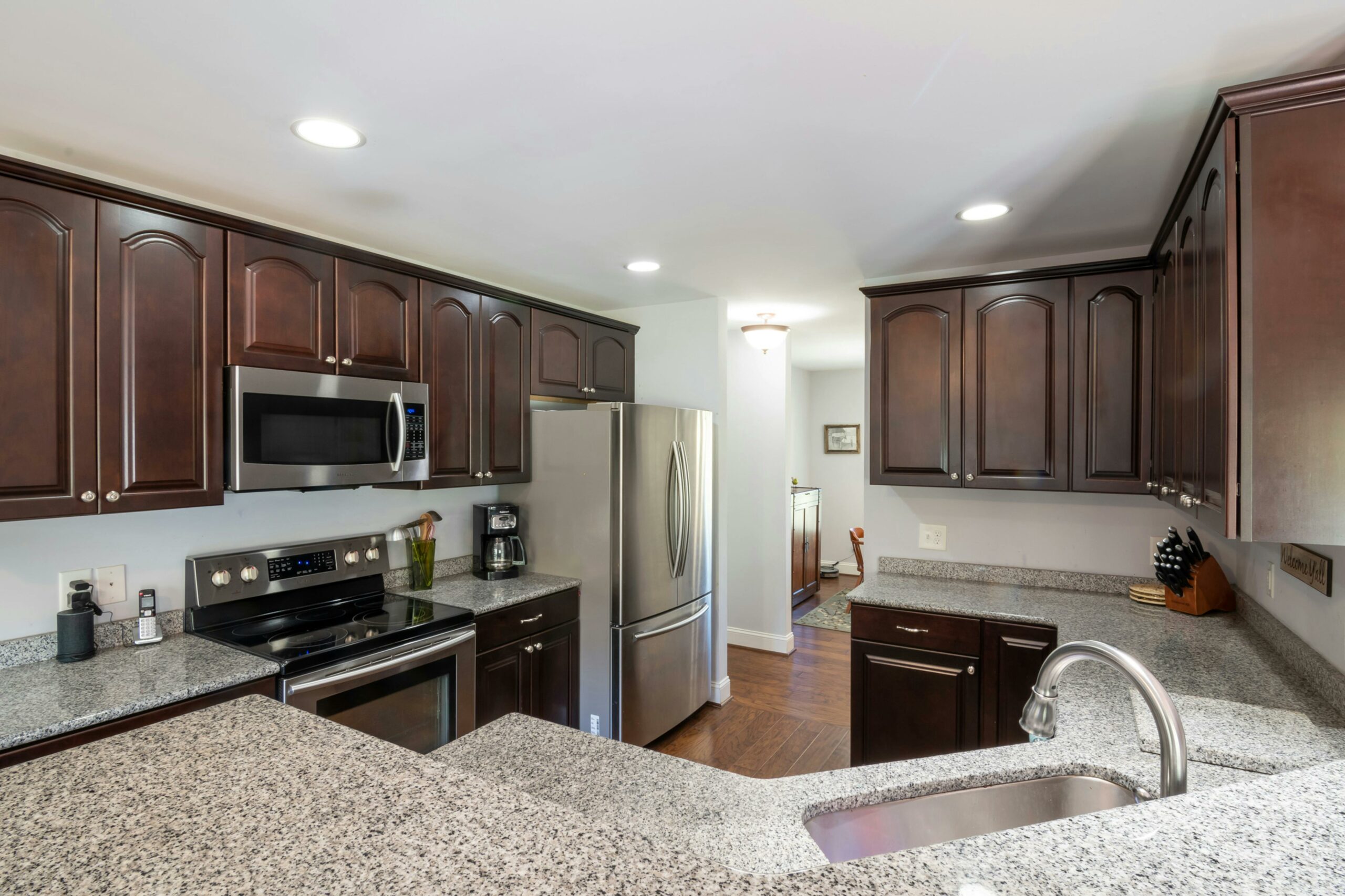
Choosing the Right Countertop: Granite or Marble
When it comes to choosing the right countertop for your kitchen or bathroom, granite and marble are two popular options. Both materials offer unique characteristics and advantages, so it’s important to consider various factors before making a decision.
Durability
Granite countertops are known for their exceptional durability. They are highly resistant to scratches, heat, and stains, making them a great choice for busy kitchens. On the other hand, marble countertops are more prone to scratches and stains, and they can be damaged by heat. However, with proper care and maintenance, marble countertops can still last for many years.
Aesthetics
Granite countertops have a natural and timeless beauty. They come in a wide range of colors and patterns, allowing you to find the perfect match for your kitchen or bathroom. Marble countertops, on the other hand, have a luxurious and elegant appearance. They are known for their unique veining patterns and can add a touch of sophistication to any space.
Maintenance and Cleaning
Granite countertops are relatively low maintenance. They require regular sealing to prevent stains and can be easily cleaned with mild soap and water. Marble countertops, on the other hand, require more care. They are more prone to stains and etching, so it’s important to clean up spills immediately and use specialized marble cleaners.
Evaluating the Cost
When it comes to cost, granite countertops are generally more affordable than marble countertops. The price of granite can vary depending on factors such as color, thickness, and origin. Marble, on the other hand, tends to be more expensive due to its rarity and luxurious appearance.
Pros and Cons
Choosing a marble countertop has its pros and cons. Pros include its elegant appearance and unique veining patterns. However, cons include its susceptibility to scratches, stains, and heat damage. On the other hand, granite countertops offer durability, a wide range of colors and patterns, and lower maintenance. However, they may lack the luxurious appearance of marble.
Installation Process
The installation process for both granite and marble countertops is similar. It involves measuring the space, cutting the slabs to size, and securing them in place with adhesive. However, due to its heavier weight, marble countertops may require additional support during installation.
Ultimately, the choice between granite and marble countertops depends on your personal preferences, budget, and the specific needs of your space. Consider the durability, aesthetics, maintenance requirements, cost, and pros and cons of each material before making a decision. With careful consideration, you can choose the right countertop that will enhance the beauty and functionality of your kitchen or bathroom.

Granite Vs Marble: A Comparative Analysis
When it comes to choosing the perfect countertop material for your kitchen or bathroom, granite and marble are two popular options. While both offer unique beauty and durability, they also have distinct characteristics that set them apart. In this comparative analysis, we will explore the key differences between granite and marble countertops to help you make an informed decision.
Durability
Granite is known for its exceptional durability. It is a natural stone that is highly resistant to scratches, heat, and stains. Granite countertops can withstand heavy use and are less likely to chip or crack compared to marble. On the other hand, marble is a softer stone and is more prone to scratches and stains. It can also be damaged by high heat or acidic substances.
Aesthetics
Both granite and marble offer stunning visual appeal, but they have distinct aesthetic qualities. Granite countertops feature a wide range of colors and patterns, with specks and veins that add depth and character. Marble, on the other hand, has a luxurious and elegant appearance with its smooth, veined surface. The choice between the two ultimately depends on your personal style and the overall design of your space.
Maintenance and Cleaning
When it comes to maintenance, granite countertops are relatively low-maintenance. They require regular sealing to prevent stains and should be cleaned with mild soap and water. Marble countertops, on the other hand, require more care and attention. They are more susceptible to stains and etching, so they need to be sealed more frequently and cleaned with non-abrasive products.
Evaluating the Cost
Cost is an important factor to consider when choosing between granite and marble countertops. Generally, granite is more affordable than marble. The price of granite countertops can vary depending on the quality and rarity of the stone, as well as the complexity of the installation. Marble, on the other hand, is considered a luxury material and tends to be more expensive.
Pros and Cons
Choosing a marble countertop has its pros and cons. On the plus side, marble offers timeless beauty and a unique, luxurious look. However, it requires more maintenance and is more prone to damage. Granite countertops, on the other hand, are highly durable and require less maintenance. However, they may not offer the same level of elegance as marble.
Installation Process
The installation process for both granite and marble countertops is similar. It involves measuring and cutting the stone to fit the space, as well as polishing and sealing the edges. However, due to the weight and fragility of marble, extra care is needed during the installation process to prevent any damage.
By considering the differences in durability, aesthetics, maintenance, cost, and installation process, you can make an informed decision between granite and marble countertops. Ultimately, it depends on your personal preferences, budget, and the specific needs of your space.

Durability of Granite and Marble Countertops
When it comes to durability, both granite and marble countertops have their own strengths and weaknesses. Understanding these differences can help you make an informed decision when choosing the right countertop material for your needs.
Granite Countertops
Granite is known for its exceptional durability. It is a natural stone that is formed under extreme heat and pressure, making it highly resistant to scratches, heat, and stains. Granite countertops are less likely to chip or crack compared to marble countertops.
However, it is important to note that the durability of granite countertops can vary depending on the quality of the stone and the level of maintenance. Regular sealing is recommended to enhance its resistance to stains and ensure its longevity.
Marble Countertops
Marble, on the other hand, is a softer and more porous stone compared to granite. While it offers a timeless and elegant look, it is more prone to scratches, stains, and heat damage. Marble countertops require more care and maintenance to preserve their appearance and durability.
It is recommended to use cutting boards and trivets to protect the surface from scratches and heat. Regular sealing is also necessary to prevent stains and maintain the longevity of the marble countertop.
Despite its susceptibility to damage, many homeowners still choose marble countertops for their unique beauty and luxurious appeal. With proper care and maintenance, it can withstand the test of time.
Overall, both granite and marble countertops can be durable options for your kitchen or bathroom. However, granite tends to be more durable and resistant to damage compared to marble. Consider your lifestyle, budget, and personal preferences when making a decision.

Aesthetics: Granite Countertops Vs Marble Countertops
When it comes to aesthetics, both granite and marble countertops offer unique and beautiful options for your kitchen or bathroom. However, there are some key differences to consider when choosing between the two.
Granite Countertops
Granite is known for its natural beauty and variety of colors and patterns. Each slab of granite is unique, with its own veining and color variations, making it a popular choice for those looking for a one-of-a-kind countertop. Granite countertops have a more speckled and textured appearance, which can add depth and character to any space.
Marble Countertops
Marble, on the other hand, is known for its elegance and timeless appeal. It has a smooth and polished surface with a distinctive veining pattern that adds a touch of luxury to any room. Marble countertops come in a range of colors, from classic white to shades of gray, beige, and even green or blue. The unique veining patterns of marble create a stunning visual effect that can elevate the overall aesthetics of your space.
Both granite and marble countertops can bring beauty and sophistication to your home, but it’s important to consider your personal style and the overall design of your space when making a decision. Whether you prefer the bold and textured look of granite or the classic elegance of marble, both options can enhance the aesthetics of your kitchen or bathroom.
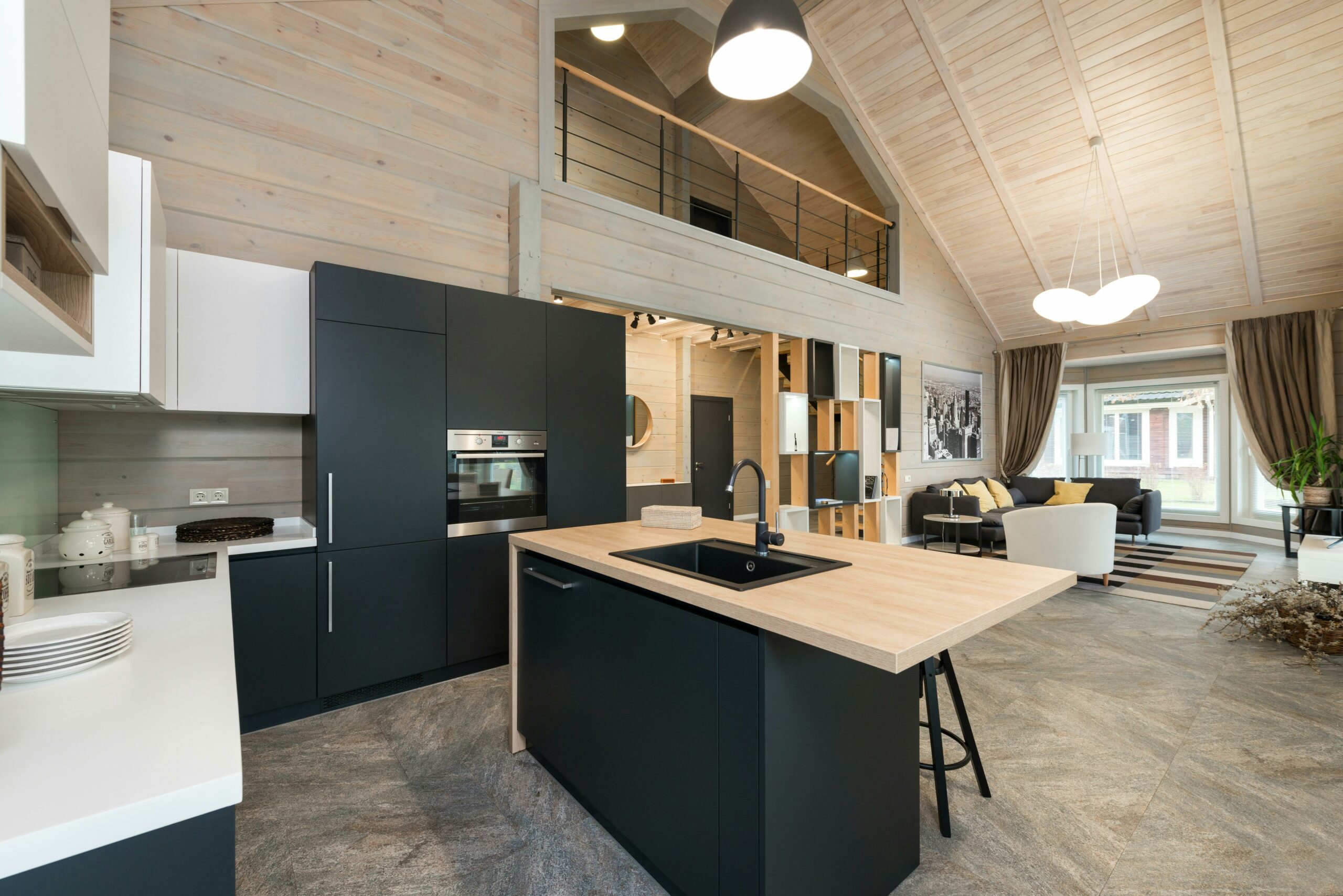
Maintenance and Cleaning: Granite Vs Marble Countertop
When it comes to maintaining and cleaning your countertops, both granite and marble require special care to keep them looking their best. However, there are some key differences between the two materials that you should be aware of.
Cleaning Granite Countertops
Granite countertops are known for their durability and resistance to stains, but they still require regular cleaning to keep them in top condition. To clean granite, you should:
-
- Use a gentle, pH-neutral cleaner specifically designed for granite.
-
- Avoid using abrasive cleaners or scrub brushes, as they can damage the surface.
-
- Wipe up spills immediately to prevent staining.
-
- Seal the granite regularly to maintain its protective barrier.
Cleaning Marble Countertops
Marble countertops are more porous and prone to staining compared to granite. To clean marble, you should:
-
- Use a mild, pH-neutral cleaner specifically formulated for marble.
-
- Avoid using acidic or abrasive cleaners, as they can etch or scratch the surface.
-
- Wipe up spills immediately to prevent staining.
-
- Seal the marble more frequently compared to granite to protect against stains.
It’s important to note that both granite and marble countertops should be treated with care to avoid damage. Always use cutting boards and trivets to protect the surface from scratches and heat.
Regular maintenance and cleaning will help extend the lifespan of your countertops and keep them looking beautiful for years to come.
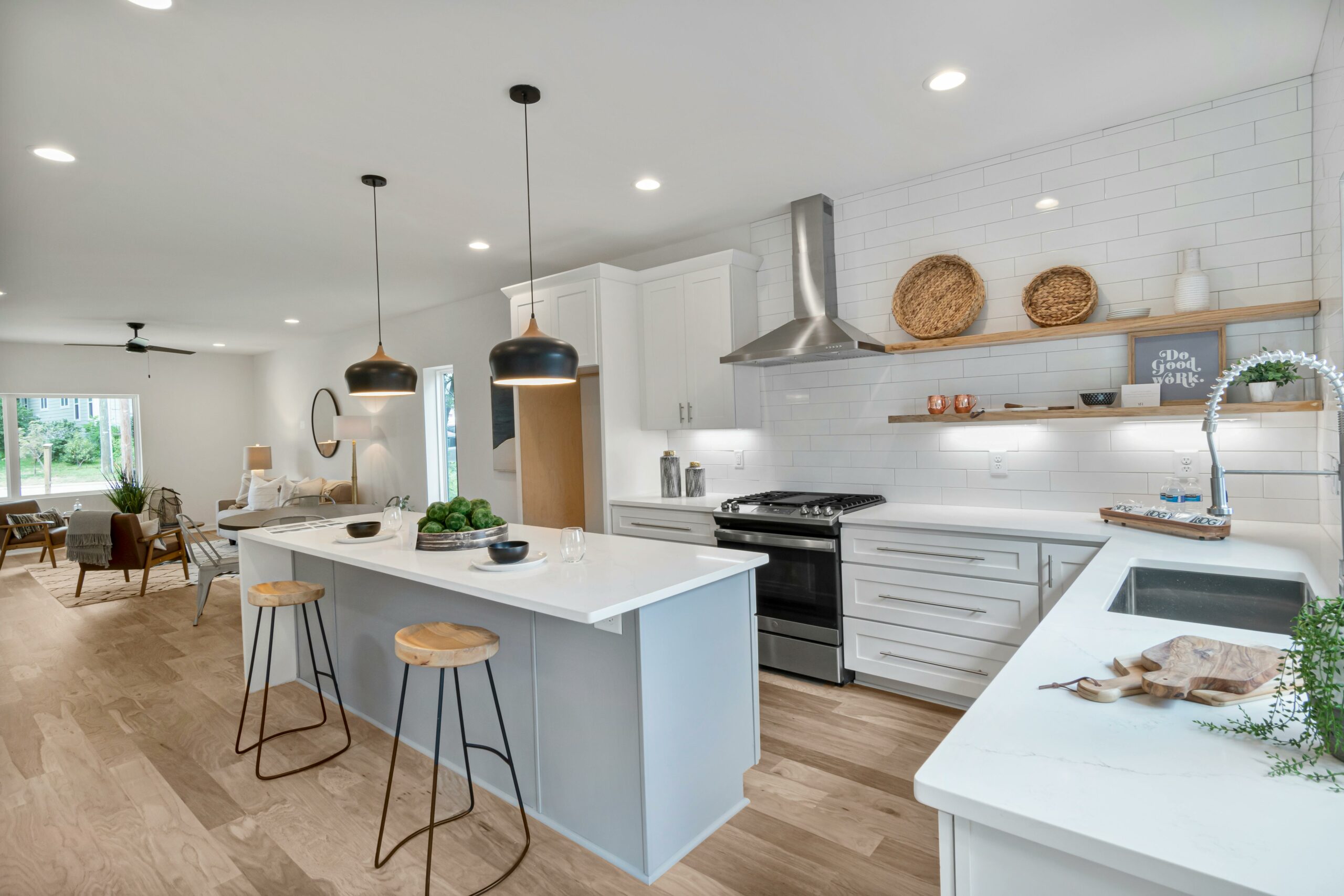
Evaluating the Cost: Granite or Marble Countertop
When it comes to choosing between granite and marble countertops, cost is an important factor to consider. Both materials have their own unique characteristics and price points, so it’s crucial to evaluate the cost before making a decision.
Cost of Granite Countertops
Granite countertops are known for their durability and natural beauty. They are available in a wide range of colors and patterns, making it easy to find one that suits your style and preferences. However, granite can be quite expensive compared to other countertop materials.
The cost of granite countertops can vary depending on factors such as the type of granite, the size of the countertop, and the complexity of the installation. On average, granite countertops can cost anywhere from $50 to $200 per square foot. Keep in mind that additional costs may be incurred for things like edge treatments, backsplashes, and sink cutouts.
Cost of Marble Countertops
Marble countertops are known for their elegance and timeless appeal. They add a touch of luxury to any kitchen or bathroom. However, marble is generally more expensive than granite.
The cost of marble countertops can vary depending on factors such as the type of marble, the size of the countertop, and the complexity of the installation. On average, marble countertops can cost anywhere from $60 to $250 per square foot. Like granite, additional costs may be incurred for edge treatments, backsplashes, and sink cutouts.
Factors Affecting the Cost
There are several factors that can affect the cost of both granite and marble countertops. These include:
-
- The quality and rarity of the stone
-
- The size and shape of the countertop
-
- The complexity of the installation
-
- The location and accessibility of the project
-
- The availability of the stone
It’s important to consider these factors when evaluating the cost of granite or marble countertops. Additionally, it’s a good idea to get quotes from multiple suppliers and contractors to ensure you’re getting the best price for your project.
Ultimately, the cost of granite or marble countertops will depend on your budget and personal preferences. Both materials have their own unique benefits and drawbacks, so it’s important to weigh the cost against other factors such as durability, aesthetics, and maintenance requirements.
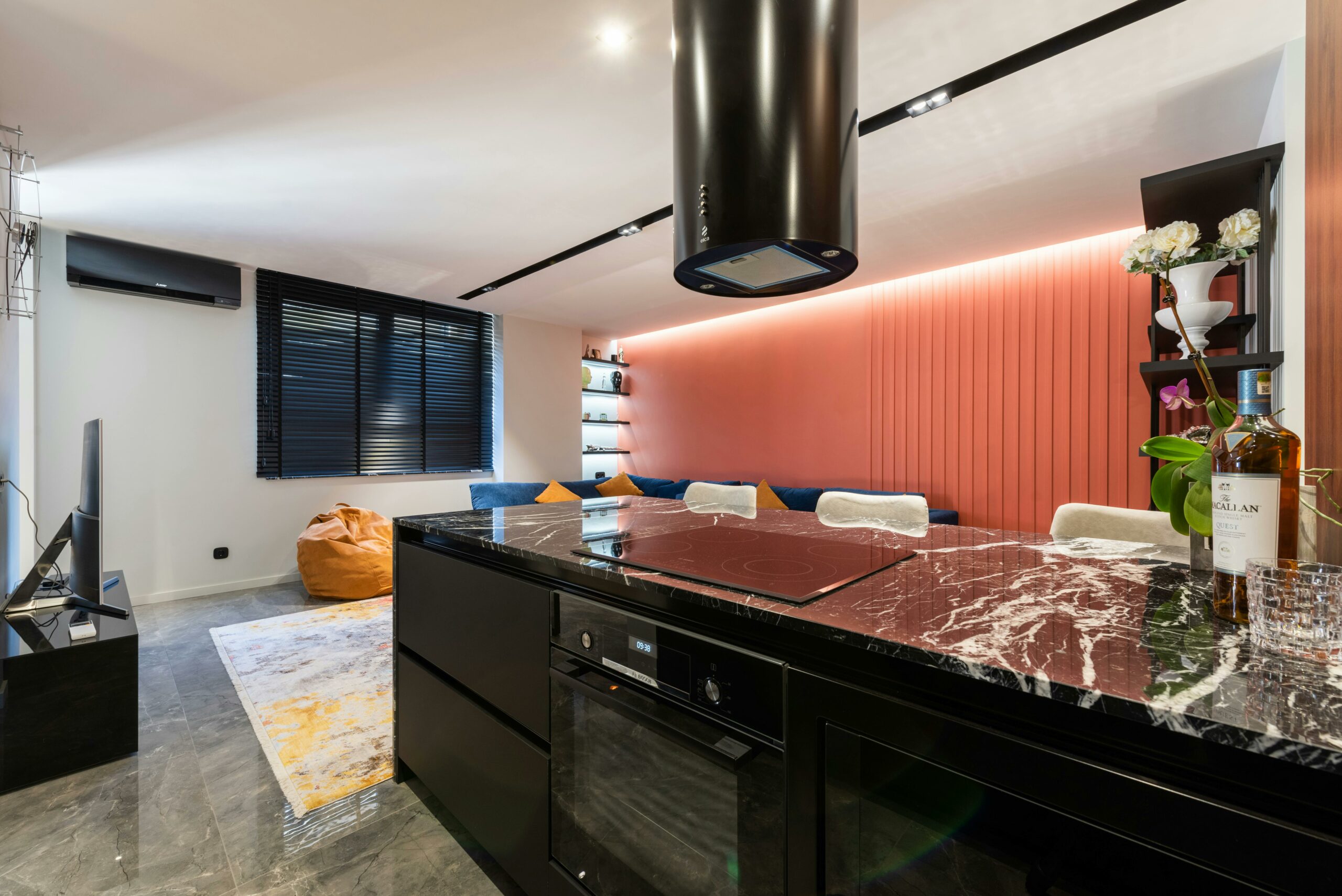
Pros and Cons of Choosing a Marble Countertop
Marble countertops are known for their timeless beauty and elegance. They have been a popular choice for homeowners and designers alike. However, like any other material, marble countertops have their own set of pros and cons that should be considered before making a decision.
Pros:
-
- Aesthetic Appeal: Marble countertops are renowned for their luxurious and sophisticated appearance. They add a touch of elegance and class to any kitchen or bathroom.
-
- Variety of Colors and Patterns: Marble comes in a wide range of colors and patterns, allowing homeowners to choose the perfect option that complements their interior design.
-
- Natural and Unique: Each marble slab is unique, with its own distinct veining and patterns. This natural variation adds character and charm to the countertop.
-
- Cool Surface: Marble has a natural coolness to it, which is ideal for rolling out dough or working with pastry. It can help keep the countertop temperature lower in hot climates.
Cons:
-
- Porous Nature: Marble is a porous material, which means it can absorb liquids and stains more easily compared to other countertop materials. Regular sealing and maintenance are required to prevent staining.
-
- Scratch and Etch Prone: Marble is softer and more prone to scratches and etching compared to other countertop materials. It can be damaged by acidic substances, such as lemon juice or vinegar.
-
- Higher Maintenance: As mentioned earlier, marble requires regular sealing and maintenance to keep it in pristine condition. This can be time-consuming and may require additional costs.
-
- Cost: Marble countertops tend to be more expensive compared to other materials, such as granite or quartz. The cost can vary depending on the quality and rarity of the marble chosen.
When considering a marble countertop, it’s important to weigh the pros and cons based on your lifestyle, budget, and preferences. While marble offers timeless beauty, it may require more maintenance and care compared to other countertop materials.
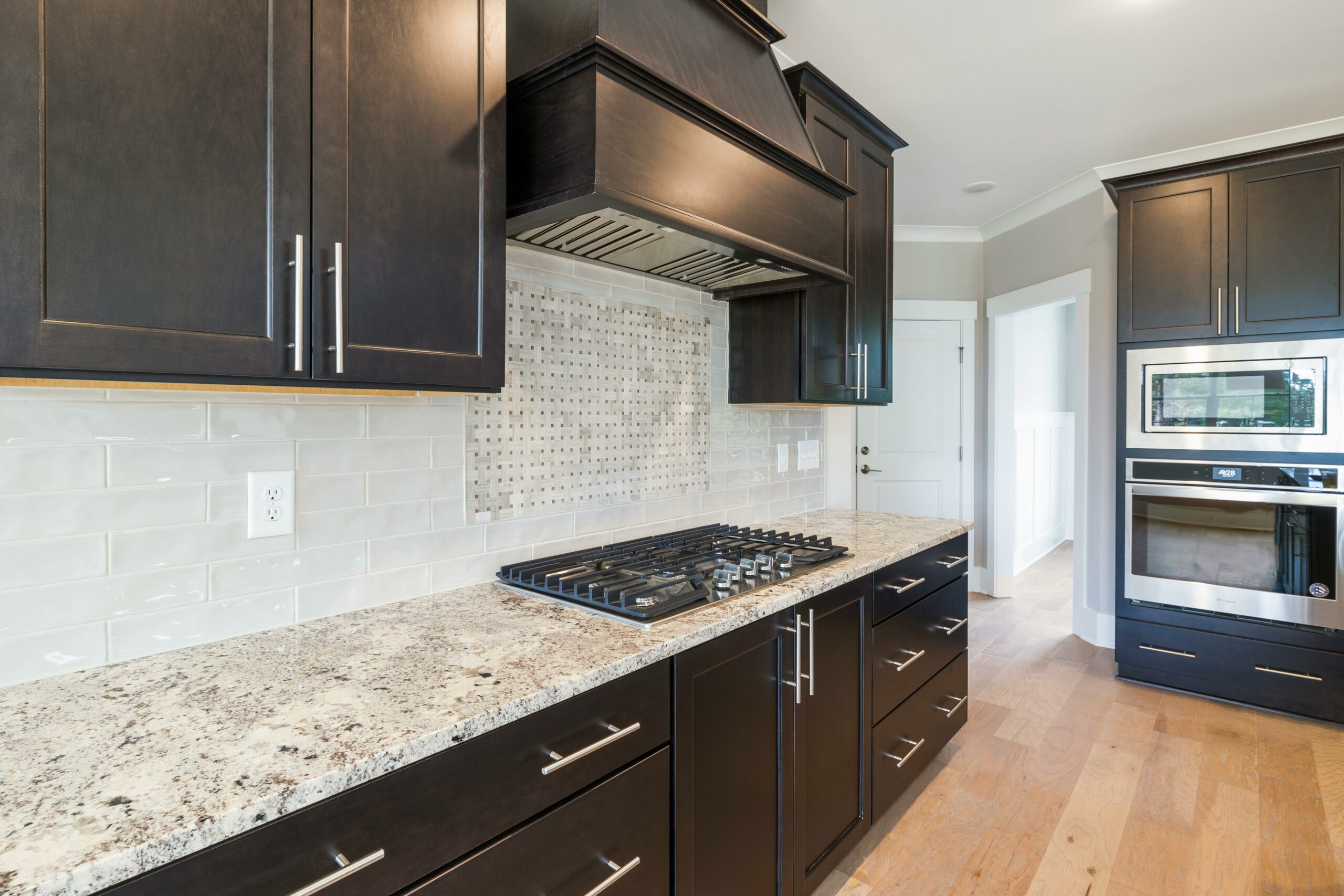
Pros and Cons of Choosing a Granite Countertop
When it comes to choosing a countertop material for your kitchen or bathroom, granite is a popular choice. It offers a unique combination of durability, aesthetics, and value. However, like any other material, granite countertops also have their pros and cons. Let’s take a closer look at them:
Pros of Choosing a Granite Countertop:
-
- Durability: Granite is a natural stone known for its strength and durability. It is heat-resistant, scratch-resistant, and can withstand heavy use without showing signs of wear and tear.
- Aesthetics: Granite countertops are highly sought after for their natural beauty and elegance. They come in a wide range of colors and patterns, allowing you to find the perfect match for your kitchen or bathroom design.
- Value: Investing in a granite countertop can increase the value of your home. Its timeless appeal and durability make it an attractive feature for potential buyers.
- Low Maintenance: Granite countertops are relatively easy to maintain. They require regular sealing to prevent staining, but other than that, they only need to be cleaned with mild soap and water.
- Resistant to Bacteria: Granite is a non-porous material, which means it is resistant to bacteria and other pathogens. This makes it a hygienic choice for kitchen countertops.
Cons of Choosing a Granite Countertop:
-
- Cost: Granite countertops can be expensive compared to other options. The price can vary depending on the quality of the stone and the complexity of the installation.
- Weight: Granite is a heavy material, which means it may require additional support during installation. This can add to the overall cost and complexity of the project.
- Prone to Chipping: While granite is durable, it is not indestructible. It can chip or crack if a heavy object is dropped on it or if it is subjected to excessive force.
- Limited Color Options: While granite comes in a wide range of colors, the options may still be limited compared to other materials. If you have a specific color scheme in mind, you may need to explore other countertop options.
- Requires Sealing: Granite countertops need to be sealed regularly to prevent staining. If not properly sealed, liquids like red wine or oil can penetrate the stone and leave permanent marks.
Considering these pros and cons can help you make an informed decision when choosing a granite countertop for your home. It’s important to weigh the benefits against the drawbacks to ensure that it aligns with your needs and preferences.

Installation Process for Granite and Marble Countertop
Installing granite and marble countertop requires careful planning and attention to detail. Here is a step-by-step guide to the installation process:
1. Measure and Template
The first step in the installation process is to measure the area where the granite or marble countertop will be installed. This ensures that the granite or marble slab will fit perfectly. A template is then created using plywood or cardboard, which serves as a guide for cutting the slab.
2. Prepare the Substrate
Before installing the granite or marble countertop, the substrate needs to be prepared. This involves ensuring that the surface is level and free of any debris. If necessary, a plywood base may be added to provide additional support.
3. Cut and Shape the Slab
Using the template as a guide, the granite or marble slab is cut and shaped to fit the countertop area. This is typically done using a diamond blade saw or water jet cutter. The edges are then smoothed and polished to achieve a finished look.
4. Apply Adhesive
Once the slab is cut and shaped, an adhesive is applied to the substrate. This adhesive helps to secure the slab in place and prevent any movement. It is important to use a high-quality adhesive that is specifically designed for granite or marble countertops.
5. Set the Slab
The slab is carefully placed onto the adhesive, ensuring that it is aligned properly. It is then pressed down firmly to ensure a strong bond between the slab and the substrate. Any excess adhesive is cleaned off to achieve a clean and seamless look.
6. Seal the Countertop
After the slab is set, the countertop is sealed to protect it from stains and damage. A high-quality sealer is applied to the surface and left to dry. This step is important for maintaining the longevity and beauty of the granite or marble countertop.
7. Install Sink and Faucet
If the countertop includes a sink and faucet, they are installed at this stage. The sink is positioned and secured in place, and the faucet is attached according to the manufacturer’s instructions. This step completes the installation process.
By following these steps, you can ensure a successful installation of granite or marble countertops in your home. It is recommended to hire a professional for this task to ensure accuracy and a professional finish.

